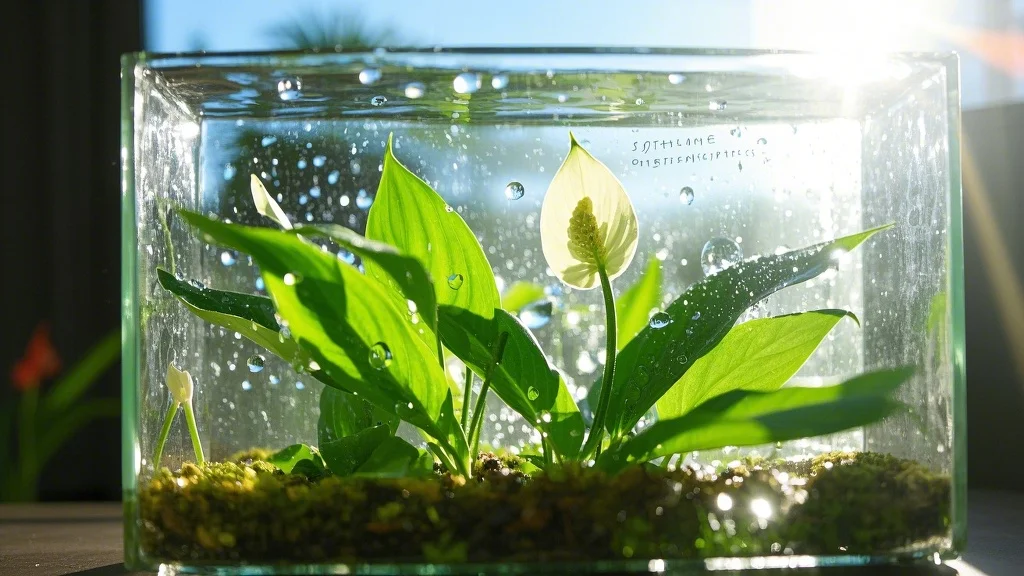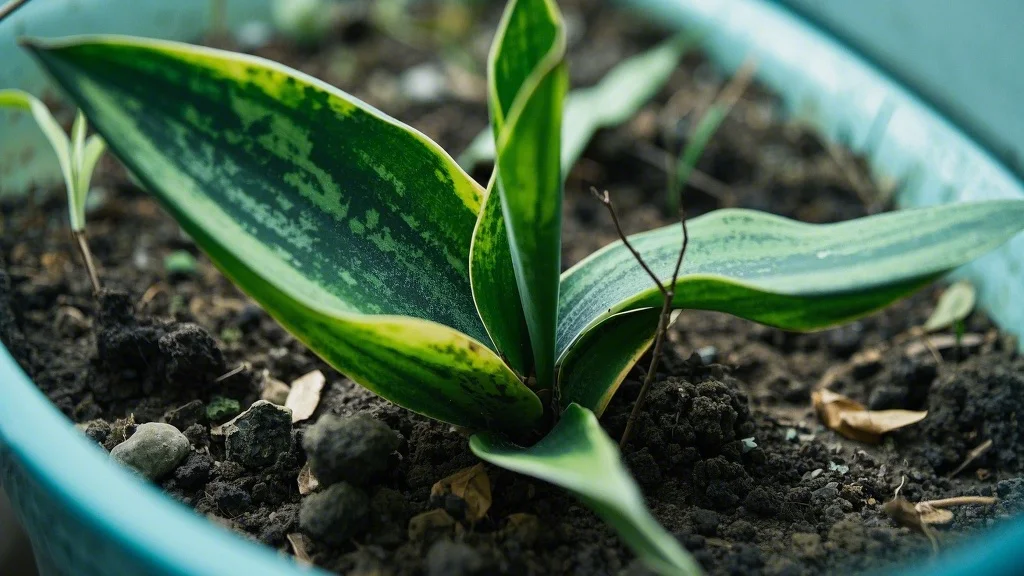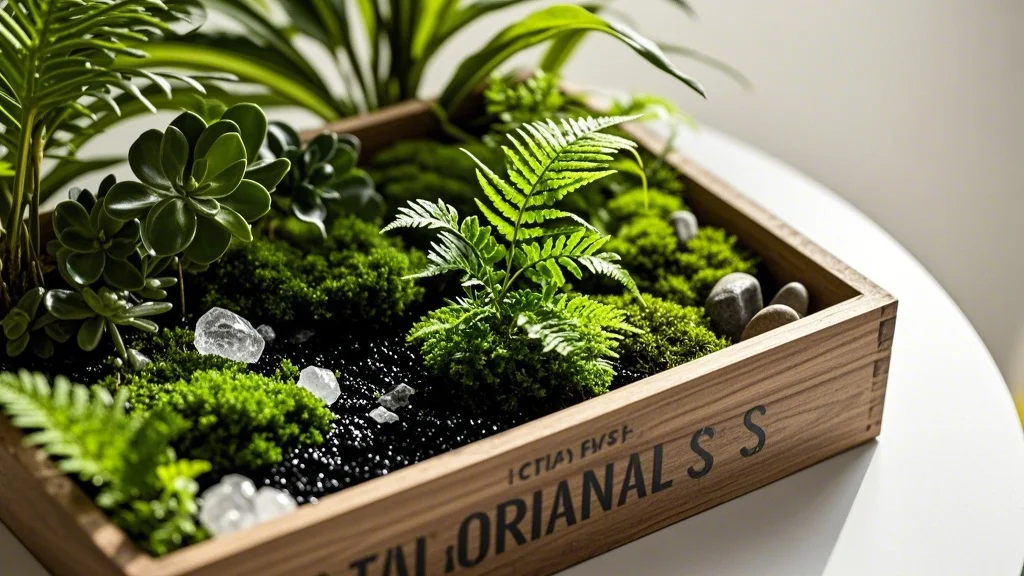Terrariums bring a slice of nature indoors, creating miniature ecosystems that can thrive with minimal maintenance. However, even the most carefully crafted terrariums can encounter issues. Whether you’re dealing with excessive moisture, struggling plants, or unwanted visitors, this guide will help you identify and resolve common terrarium problems. With the right knowledge and techniques, you can restore your miniature garden to its full beauty and health.
Contents
- 1 Understanding Your Terrarium Ecosystem
- 2 Moisture Management Issues
- 3 Plant Health Problems
- 4 Pest and Disease Issues
- 5 Structural and Aesthetic Issues
- 6 Advanced Troubleshooting Techniques
- 7 Specialized Solutions for Different Terrarium Types
- 8 Conclusion
- 9 Quick Reference: Terrarium Troubleshooting Chart
Understanding Your Terrarium Ecosystem
Before diving into specific problems, it’s important to understand that a terrarium is a delicate balance of elements:
- Light: Powers photosynthesis but can create heat issues
- Water: Essential for life but must be properly managed
- Air circulation: Critical even in closed systems
- Soil composition: Provides nutrients and drainage
- Plant selection: Must be appropriate for terrarium conditions
When one element falls out of balance, problems arise. Let’s explore these issues and their solutions.
Moisture Management Issues

Excessive Condensation
Problem: Water droplets constantly cover the glass walls, obscuring the view of your plants.
Causes:
- Overwatering
- Insufficient light exposure
- Temperature fluctuations
- Container too tightly sealed
Solutions:
- Ventilate: Remove the lid for a few hours to allow excess moisture to escape
- Reduce watering: Allow the terrarium to dry out before adding more water
- Relocate: Move away from direct sunlight or heat sources that cause temperature fluctuations
- Wipe down: Use a clean paper towel attached to a stick to absorb excess moisture from glass walls
Dry Conditions
Problem: Plants look wilted, soil appears dry, and there’s little to no condensation.
Causes:
- Insufficient initial watering
- Container not sealed properly
- Too much ventilation
- Excessive heat exposure
Solutions:
- Add water gradually: Use a spray bottle or pipette to add small amounts of water
- Check seals: Ensure lids or corks fit properly on closed terrariums
- Reduce ventilation: Keep closed terrariums sealed for longer periods
- Relocate: Move away from heat sources or direct sunlight
Plant Health Problems

Yellowing or Browning Leaves
Problem: Plant leaves turning yellow or brown, indicating stress or decline.
Causes:
- Overwatering or underwatering
- Nutrient deficiencies
- Light issues (too much or too little)
- Natural leaf senescence
Solutions:
- Adjust watering: Check soil moisture and adjust accordingly
- Evaluate lighting: Ensure plants receive appropriate light for their species
- Prune affected areas: Remove damaged leaves to encourage new growth
- Consider fertilizer: For long-term terrariums, add a very diluted fertilizer (1/4 strength)
Leggy or Stretched Plants
Problem: Plants growing tall with increased space between leaves, reaching toward light sources.
Causes:
- Insufficient light
- Inappropriate plant selection
- Natural growth patterns
Solutions:
- Increase light exposure: Move terrarium to a brighter location (but avoid direct sun)
- Prune strategically: Trim leggy growth to encourage bushier development
- Rotate regularly: Turn your terrarium regularly to ensure even light distribution
- Consider supplemental lighting: Use grow lights if natural light is limited
Plant Die-off
Problem: Plants dying despite seemingly appropriate care.
Causes:
- Incompatible plant selection
- Root rot from overwatering
- Pest or disease issues
- Natural end of lifecycle for some species
Solutions:
- Remove dead material: Promptly remove any dead plant matter
- Reassess plant selection: Replace with species better suited to terrarium conditions
- Check drainage: Ensure proper drainage layers are functioning
- Quarantine new additions: Always quarantine new plants before adding to established terrariums
Pest and Disease Issues
Mold and Fungus
Problem: White, gray, or colored fuzzy growth on soil or plants.
Causes:
- Excessive moisture
- Poor air circulation
- Decaying organic matter
- Contaminated materials
Solutions:
- Increase ventilation: Open the terrarium to improve air flow
- Remove affected areas: Use tweezers to carefully remove visible mold
- Apply cinnamon: Sprinkle ground cinnamon (a natural fungicide) on affected areas
- Reduce watering: Allow the terrarium to dry out between waterings
- Add springtails: These beneficial microorganisms consume mold and fungus
Pest Infestations
Problem: Small insects like fungus gnats, aphids, or spider mites appearing in your terrarium.
Causes:
- Contaminated soil or plants
- Open windows or doors allowing entry
- Overwatering (especially for fungus gnats)
Solutions:
- Isolate the terrarium: Move away from other plants to prevent spread
- Manual removal: Use tweezers or a gentle water spray to remove visible pests
- Introduce beneficial insects: Consider adding predatory mites or springtails
- Natural remedies: Create a diluted solution of neem oil or insecticidal soap for severe cases
- Last resort: Remove heavily infested plants entirely
Algae Growth
Problem: Green film developing on glass, soil, or decorative elements.
Causes:
- Excessive light
- Nutrient-rich water
- Stagnant conditions
Solutions:
- Reduce light exposure: Move to a less bright location or reduce light duration
- Clean glass surfaces: Use a soft cloth or paper towel to wipe away algae
- Remove surface algae: Gently scrape away visible algae from soil and decorations
- Use distilled water: Switch to distilled water for future waterings
- Add fast-growing plants: These will compete with algae for nutrients
Structural and Aesthetic Issues
Fogging Glass
Problem: Glass becomes permanently cloudy or develops mineral deposits.
Causes:
- Hard water deposits
- Etching from acidic conditions
- Scratches from cleaning
Solutions:
- Vinegar solution: Clean with a 1:1 mixture of white vinegar and water
- Lemon juice: Apply and gently scrub with a soft cloth
- Prevention: Use distilled or filtered water for future waterings
- Careful cleaning: Use microfiber cloths rather than paper towels
Soil Compaction
Problem: Soil becomes dense and hard, potentially affecting drainage and root growth.
Causes:
- Natural settling over time
- Overwatering followed by drying
- Poor initial soil composition
Solutions:
- Gently aerate: Use a small fork or chopstick to carefully loosen soil
- Add fresh medium: Top up with appropriate terrarium soil mix
- Improve composition: For severe cases, consider partial soil replacement
- Add activated charcoal: This helps maintain soil health in closed systems
Uneven Growth or Composition
Problem: Plants growing unevenly, creating an unbalanced appearance.
Causes:
- Uneven light distribution
- Natural growth patterns
- Initial planting arrangement
Solutions:
- Strategic pruning: Trim faster-growing plants to maintain balance
- Rotate regularly: Turn your terrarium to ensure even light exposure
- Rearrange elements: Carefully reposition decorative elements or plants
- Add or remove plants: Adjust composition to create visual harmony
Advanced Troubleshooting Techniques
Complete Terrarium Reset
When multiple serious issues occur simultaneously, sometimes the best approach is a reset:
- Remove and salvage: Take out healthy plants and clean them thoroughly
- Discard compromised materials: Replace soil, drainage materials, and severely affected plants
- Sanitize container: Clean with a mild bleach solution (1:10 ratio) and rinse thoroughly
- Rebuild properly: Reconstruct with fresh materials and quarantined plants
- Adjust care routine: Implement lessons learned from previous issues
Preventative Maintenance Schedule
Establish a regular maintenance routine to catch problems early:
- Weekly: Visual inspection for pests, mold, or plant stress
- Monthly: Light pruning, glass cleaning, and moisture assessment
- Quarterly: More thorough inspection of soil health and drainage layers
- Annually: Evaluate overall composition and consider rejuvenation techniques
Specialized Solutions for Different Terrarium Types
Closed Terrariums
Closed systems require particular attention to:
- Moisture cycles: Allow natural evaporation and condensation
- Plant selection: Choose humidity-loving, slow-growing species
- Minimal intervention: Resist the urge to constantly open and adjust
Open Terrariums
These systems have different challenges:
- Regular watering: Develop a consistent schedule
- Humidity management: Consider occasional misting for moisture-loving plants
- Dust accumulation: Clean leaves and surfaces periodically
Desert/Succulent Terrariums
These dry environments face unique issues:
- Overwatering risk: Allow complete drying between minimal waterings
- Ventilation needs: Require more air circulation than tropical terrariums
- Light requirements: Need bright, indirect light for compact growth
Conclusion
Troubleshooting terrarium problems requires observation, patience, and a willingness to adjust your approach. By understanding the delicate balance of elements in your miniature ecosystem, you can identify issues early and implement effective solutions. Remember that each intervention should be gentle and measured—terrariums respond best to gradual changes rather than dramatic overhauls.
With the knowledge and techniques outlined in this guide, you’re well-equipped to address common terrarium problems and maintain a healthy, beautiful miniature landscape. Your terrarium isn’t just a decoration but a living ecosystem that will reward your care with years of natural beauty and the satisfaction of successful plant cultivation in a contained environment.
Quick Reference: Terrarium Troubleshooting Chart
| Problem | Key Symptoms | Primary Solutions |
|---|---|---|
| Excess Moisture | Constant condensation, soggy soil | Ventilate, reduce watering, wipe glass |
| Dry Conditions | Wilting plants, dry soil | Add water gradually, check seals |
| Mold/Fungus | White/gray fuzzy growth | Increase air flow, remove affected areas, add springtails |
| Leggy Growth | Stretched stems, sparse leaves | Increase light, prune, rotate regularly |
| Algae | Green film on surfaces | Reduce light, clean surfaces, use distilled water |
| Pests | Visible insects, damaged leaves | Manual removal, beneficial insects, isolation |
| Yellowing Leaves | Discoloration, leaf drop | Adjust water/light, prune affected areas |
| Cloudy Glass | Persistent fog, mineral deposits | Clean with vinegar solution, use distilled water |
Remember that prevention is always easier than treatment—start with appropriate plant selection, proper setup, and consistent but minimal care to enjoy a thriving terrarium ecosystem.







